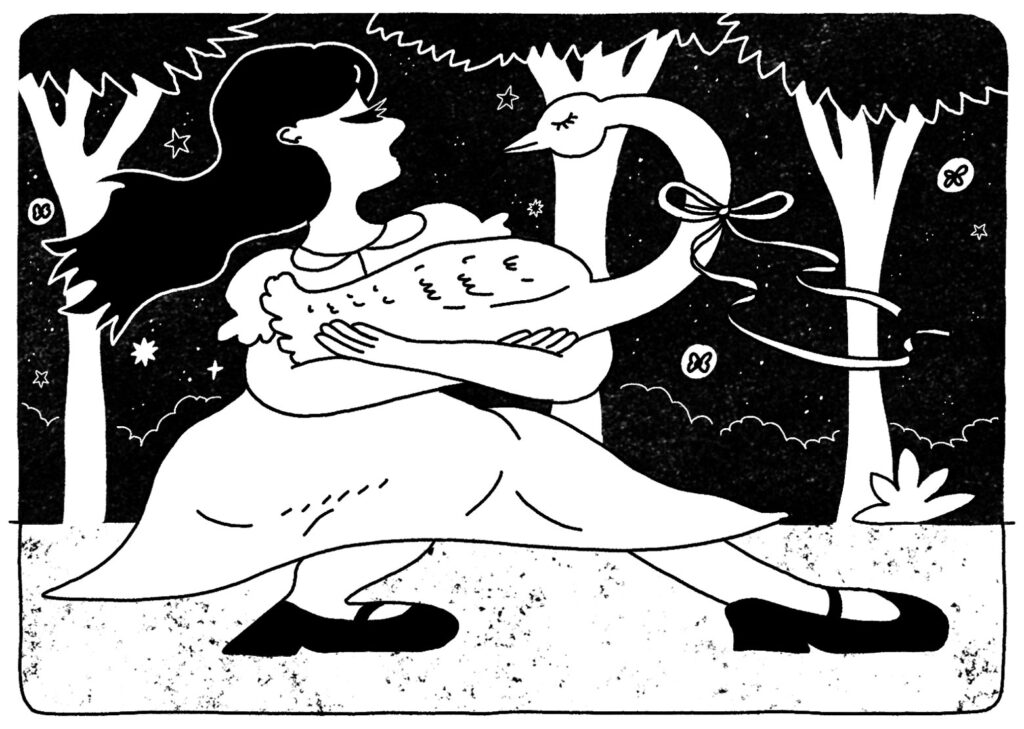In her four earlier and fine feminist novels, Heather O’Neill studies her hometown of Montreal and its varied histories. Lullabies for Little Criminals, from 2006, follows Baby, a twelve-year-old first-person narrator who is trying to navigate volatile Boulevard St‑Laurent in the 1980s. Nineteen-year-old Nouschka Tremblay, the protagonist of The Girl Who Was Saturday Night, from 2014, watches the second Quebec referendum from the same area. Moving into third-person narration, O’Neill charts two orphaned children’s descent into crime, drugs, and sex in the early twentieth century in The Lonely Hearts Hotel, from 2017. In When We Lost Our Heads, from 2022, she examines two young best friends fighting for their often mislaid kinship. In each of these works, she creates engaged figures who must learn how to succeed in Montreal.
With her latest, The Capital of Dreams, O’Neill leaves the familiar Canadian city behind in order to depict the devastating impact that a military invasion brings to the central European country of Elysia. Although the Enemy has already overthrown Elysian forces in its determination to “reclaim the land they had lost in a treaty after the Great War,” mass destruction has not yet reached the seat of government: “The Capital was considered sacrosanct by both sides. Now the citizens of the Capital existed in an uneasy lull in the violence, waiting to see what would happen next, while slowly building an underground resistance.” But then the Enemy army easily moves “towards the Capital to destroy everything.” Once there, it takes “over the airwaves, preventing any news from being transmitted to people in this country, and also neighbouring ones.” The narrative pace of the steadily increasing occupation and destruction is absolutely riveting, jumping back and forth from the cityscapes and Enemy patrols to the helpless individuals trying to inaugurate a functioning resistance.

On her escape, the young woman strikes up a friendship with a white goose.
Amery Sandford
O’Neill’s protagonist is a fourteen-year-old, Sofia Bottom, an upper-class girl whose demeanour has a certain conceit and sophistication indicative of her cosmopolitan upbringing. Sofia’s brilliant mother is “at the very centre of the art world” in the Capital and beyond: “It could be claimed that Clara Bottom was the Simone de Beauvoir of Elysia. She was the first to write in their language what it is to be a woman.” A celebrated non-fiction author known for The Rights and Importance of Women in the Modern Age, Clara has filled a shelf of the family’s “enormous penthouse apartment” with cultural and humanitarian awards, including seven honorary degrees.
As the novel opens, Clara asks her daughter to smuggle to safety her new manuscript — a memoir — on the last train evacuating children out of Elysia. When the train stops an hour outside the city in the middle of a forest, supposedly so the children can board trucks and return home, Sofia flees to escape her own death, losing her mother’s prized pages in the process.
Within a staggering treatment of war and its impact on young Sofia comes a simultaneous study of the relevance of art in such a terrifying universe. In the Capital, “all the theatres and newspapers and concert halls had been closed, as Elysian art was now illegal,” echoing the totalitarian world of Margaret Atwood’s The Handmaid’s Tale. Later, higher education is also shut down: “The entire faculty of Freedom University has disappeared.” Clara explains to her daughter, “We have to get the word out to Europe. They have to know that we are like them. They can’t let a civilized society filled with thinkers and artists be razed to the ground.” After the Leader of the Enemy exhorts his followers to denounce the evils of Elysia —“women need to be subservient to men or all hell breaks loose”— Clara makes a determined proclamation. “As long as there is one writer with all the words and ideas of Elysia in her head,” she triumphantly declares, “this country will flourish.”
During her desperate flight from the train and from the uncertain future awaiting the Capital’s inhabitants, Sofia leans over and picks up a white goose: “To her surprise, it did not struggle to free itself but relaxed in her arms.” After the bird walks with her for an hour, she begins to believe that they have an arrangement. In the Canadian tradition of the animal story, the goose becomes a caring companion, who guides the protagonist along her way. Amid armed conflict and the possibility of art holding out against the Enemy, he travels with Sofia, transforming the novel into a refined but dark fairy tale.
In abandoning — presumably only for a time — Montreal’s lower- and upper-class neighbourhoods, O’Neill creates a harrowing and all too timely account of a nation overcome by occupying forces. Including a talkative goose in her depiction of a young girl’s sudden growth into adulthood, she unites the classic animal story with a modern child’s arrival at responsibility. And in chronicling the horrendous calamities that befall Elysia in its steady decline, O’Neill utters a desperate plea: art may triumph over the repressive rulers who are doing their utmost to silence the power of expression, but it succeeds only when enough people are willing to stand up to such forces.
Tragically, too few are willing to stand up, and The Capital of Dreams ends with Elysia’s annihilation — with Sophia left standing in the ruins of the Capital. The result is a hard-hitting and eloquent portrait of a country doomed to defeat, because those who are most willing to defy the barbarian hordes — like Clara — are left to act alone.
David Staines is the author of A History of Canadian Fiction and other books.

